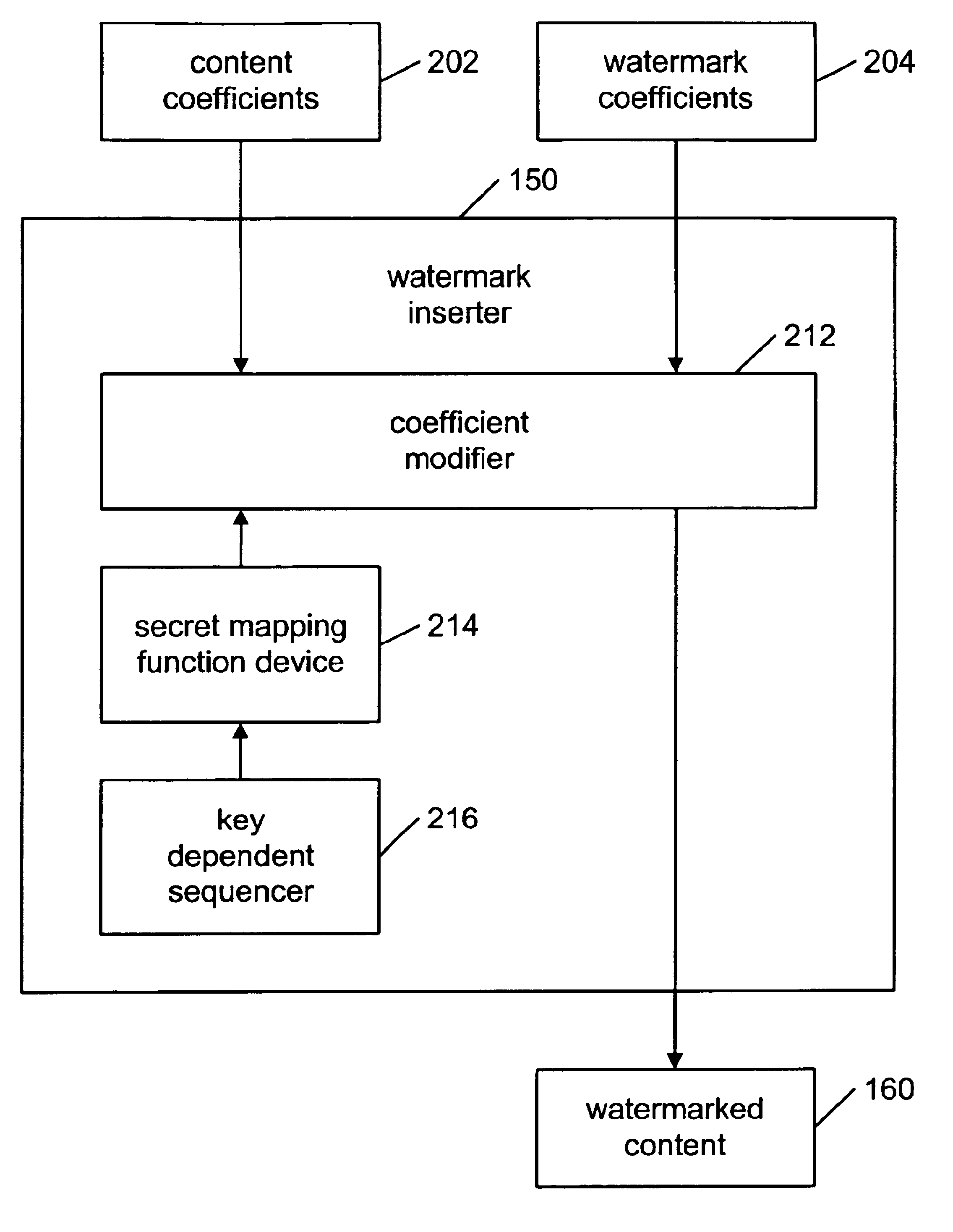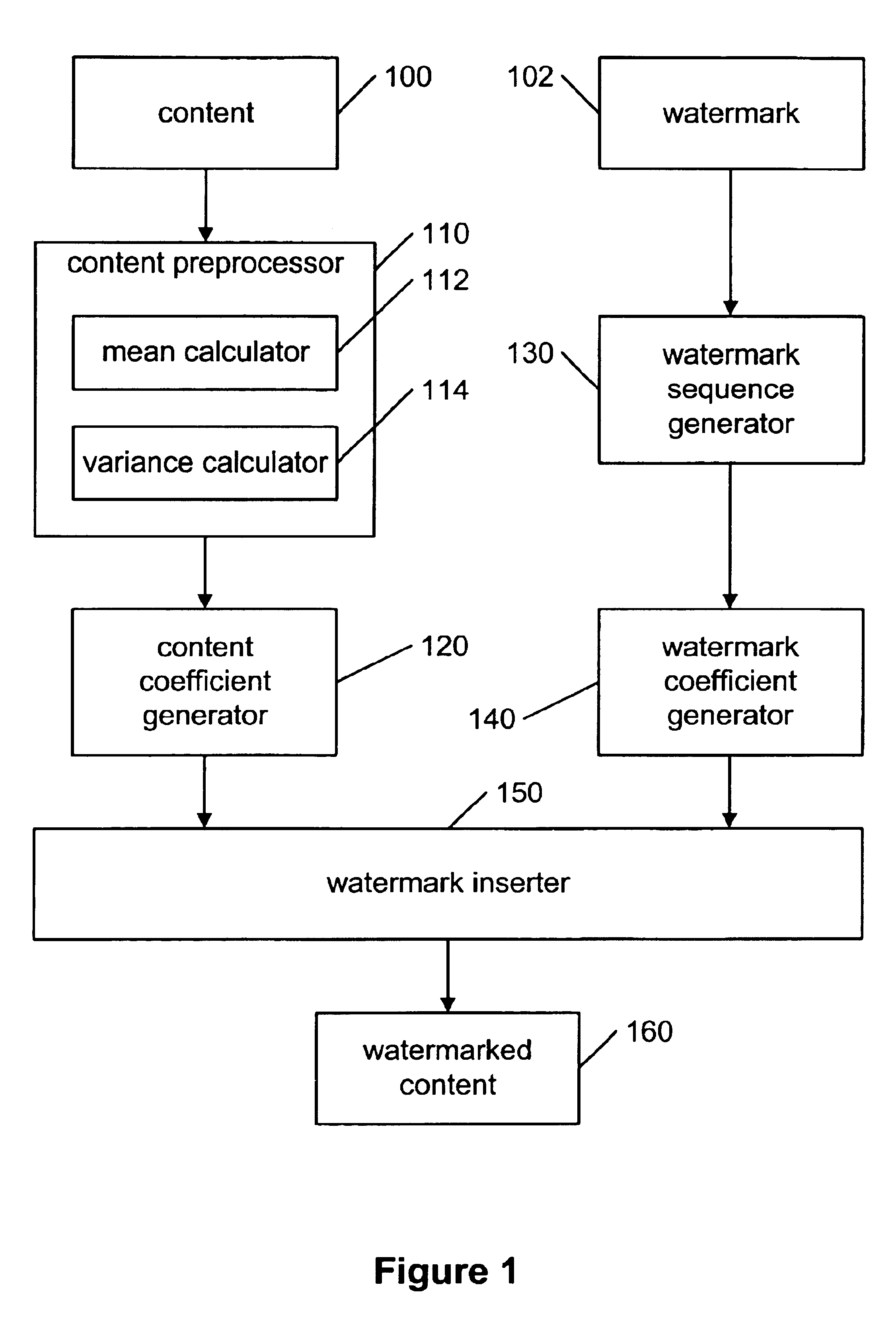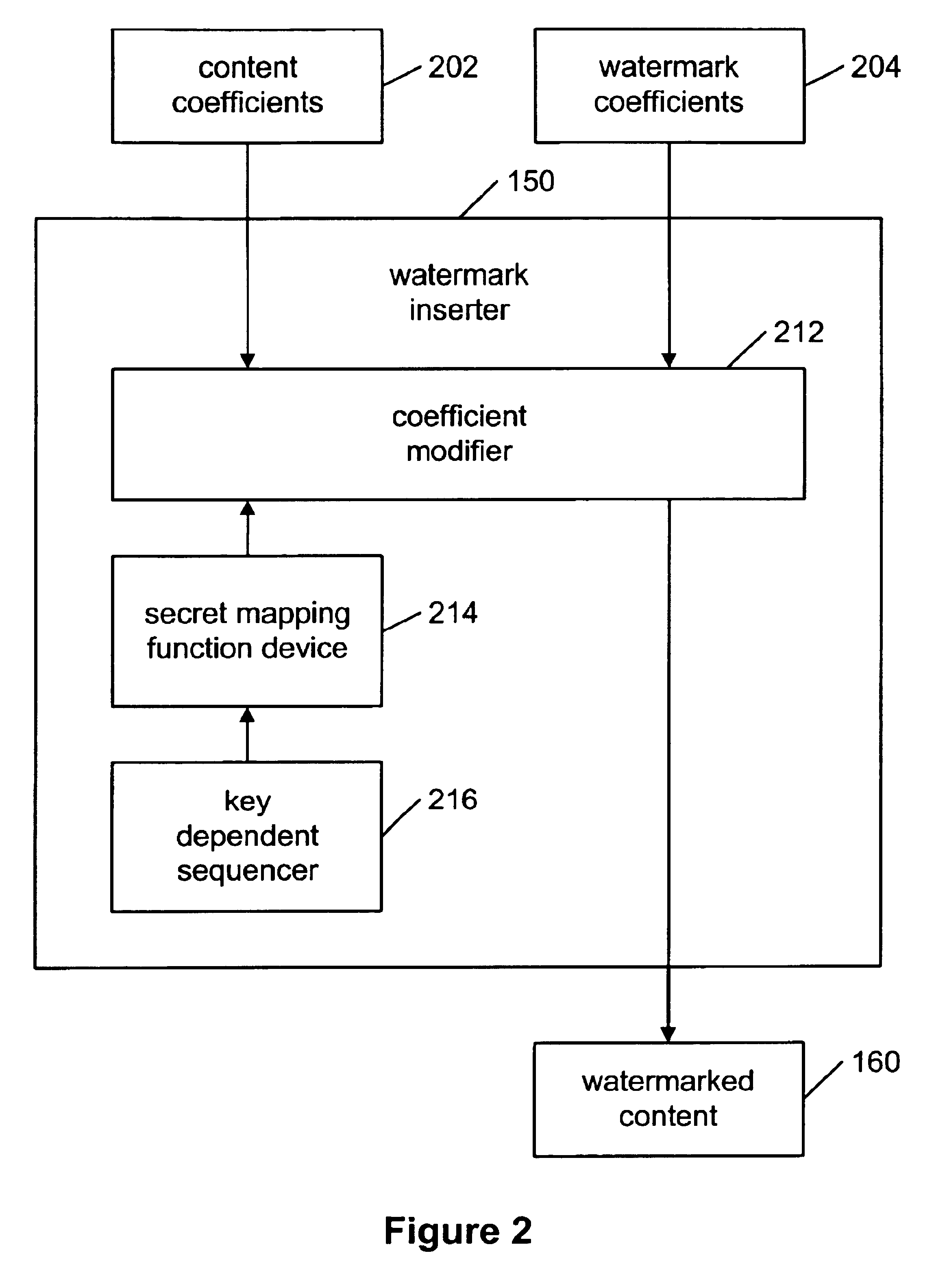Secure oblivious watermarking using key-dependent mapping functions
a mapping function and key-dependent technology, applied in image watermarking, digital transmission, instruments, etc., can solve the problems of difficult modification or removal by pirates, unpractical access to original images, distortion introduced by embedding watermarks into content, etc., to reduce interference, protect watermarks, and reduce the effect of distortion between content coefficients and associated watermark coefficients
- Summary
- Abstract
- Description
- Claims
- Application Information
AI Technical Summary
Benefits of technology
Problems solved by technology
Method used
Image
Examples
Embodiment Construction
[0041]The present invention is a new method for watermarking content using a novel class of secure mapping watermarking functions using key-dependent mapping functions.
[0042]The binary watermarking scheme disclosed by Fredrich and discussed in the background section may be defeated by a histogram attack because the DCT coefficients may be clustered in the middle of the interval for the correct quantization step size β. The present invention overcomes this security problem by first replacing the binary watermark sequence by a continuous sequence and by using secret mapping functions for different DCT coefficients. Replacing the binary watermark sequence by a continues sequence may cause the DCT coefficients after quantization to spread out in the quantization interval, making the search for the original quantization step size β difficult. Using secret mapping functions for different DCT coefficients may make the histogram attack impossible because the mapping functions may not be kno...
PUM
 Login to View More
Login to View More Abstract
Description
Claims
Application Information
 Login to View More
Login to View More - R&D
- Intellectual Property
- Life Sciences
- Materials
- Tech Scout
- Unparalleled Data Quality
- Higher Quality Content
- 60% Fewer Hallucinations
Browse by: Latest US Patents, China's latest patents, Technical Efficacy Thesaurus, Application Domain, Technology Topic, Popular Technical Reports.
© 2025 PatSnap. All rights reserved.Legal|Privacy policy|Modern Slavery Act Transparency Statement|Sitemap|About US| Contact US: help@patsnap.com



